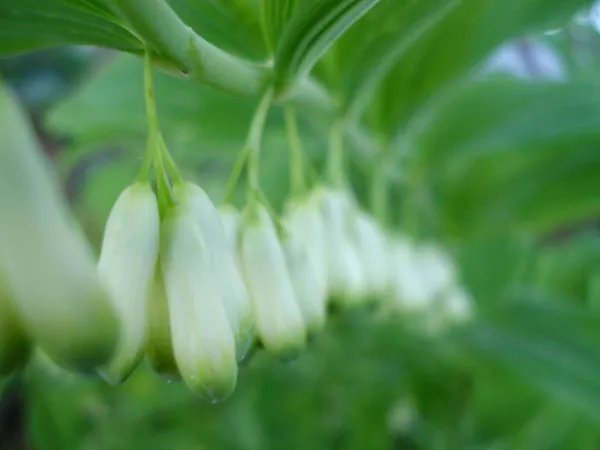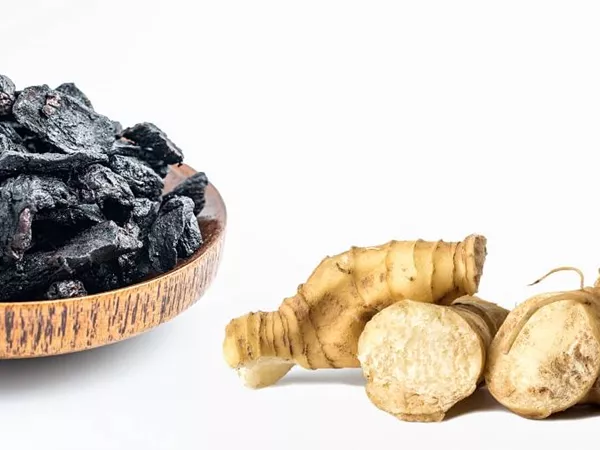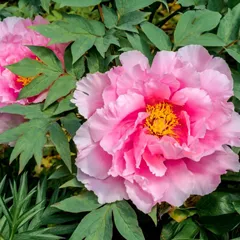Huang Jing
Huang Jing
English: King solomon's seal roots
Chinese: 黄精
Use of Huang Jing (king solomon's seal roots) in TCM
Please note that you should never self-prescribe TCM ingredients. A TCM ingredient is almost never eaten on its own but as part of a formula containing several ingredients that act together. Please consult a professional TCM practitioner, they will be best able to guide you.
Preparation: Dig the root out in spring or autumn, remove the fibrous elements and wash it. Boil or steam it thoroughly, until the core of the root is cooked. Dry it and boil it again in Chinese yellow wine. Dry it again under the sun. Repeat the process (boiling in Chinese wine and dry) another 7 times. Dry a final time.
Dosage: 9-15g.
Main actions according to TCM*: Supply Qi and nourish Ying. Tonifies the Spleen. Moistens Dryness. Tonifies the Kidneys and supplements Essence.
Primary conditions or symptoms for which Huang Jing may be prescribed by TCM doctors*: Diabetes Fatigue Premature graying Dry cough Dry mouth Anorexia
Contraindications*: Not to be used for Spleen Deficiency with Dampness and poor digestion as this herb is very dampening.
Common TCM formulas in which Huang Jing is used*
Xuan Yu Tong Jing Tang
Source date: 1826 AD
Number of ingredients: 10 herbs
Formula key actions: Pacifies the Liver. Removes Stagnation. Drains Fire. Unblocks the Meridians.
Key TCM concepts behind Huang Jing's properties
In Traditional Chinese Medicine (TCM), Huang Jing belongs to the 'Tonic herbs for Qi Deficiency' category. Tonic herbs are used for patterns of Deficiency, when one lacks one of the 'Four Treasures' (Qi, Blood, Yin and Yang). Qi tonics are typically sweet and they tend to enter the Spleen and Lungs because these Organs are most involved with the production of Qi.
Furthermore Huang Jing is Neutral in nature. This means that Huang Jing typically doesn't affect the balance in your body. Balance between Yin and Yang is a key health concept in TCM. Eating too many "Hot" (Yang) ingredients can lead to an imbalance whereby one has a Yang Excess. The inverse is true as well: too many "Cold" (Yin) ingredients can lead to a Yin Excess. The Neutral nature of Huang Jing means that you don't have to worry about that!
Huang Jing also tastes Sweet. The so-called 'Five Phases' theory in Chinese Medicine states that the taste of TCM ingredients is a key determinant of their action in the body. Sweet ingredients like Huang Jing tends to slow down acute reactions and detoxify the body. They also have a tonic effect because they replenish Qi and Blood.
The tastes of ingredients in TCM also determine what Organs and Meridians they target. As such Huang Jing is thought to target the Kidney, the Lung and the Spleen. According to TCM, the Kidneys do not only regulate the urinary system but also play a key role in the reproductive system and the growth and aging process of the body. In addition to performing respiration, the Lungs are thought in TCM to be a key part of the production chain for Qi and the Body Fluids that nourish the body. The Spleen assists with digestion, Blood coagulation and Fluids metabolism in the body.
Research on Huang Jing
Total saponins from Polygonatum kingianum (TSPK) may be used as adjuvant therapy to control blood glucose and insulin resistance in type 2 diabetic individuals.1.
Bushen Houxue (consisting of king solomon's seal rhizome) combined with ultrasound-guided follicle aspiration is a safe and effective treatment for refractory polycystic ovary syndrome, with few trauma.2.
Sources:
1. J Lu, Y Wang, H Yan, P Lin, W Gu, J Yu (2016). "Antidiabetic effect of total saponins from Polygonatum kingianum in streptozotocin-induced daibetic rats". Journal of ethnopharmacology, 2016 - Elsevier
2. Liang RN, Liu J, Lu J. (2008). Treatment of refractory polycystic ovary syndrome by bushen huoxue method combined with ultrasound-guided follicle aspiration. Zhongguo Zhong Xi Yi Jie He Za Zhi. , 28(4):314-7.
Use of Huang Jing as food
Huang Jing is also eaten as food. It is used as an ingredient in dishes such as Simmered Sea Cucumbers with Huang Jing.





